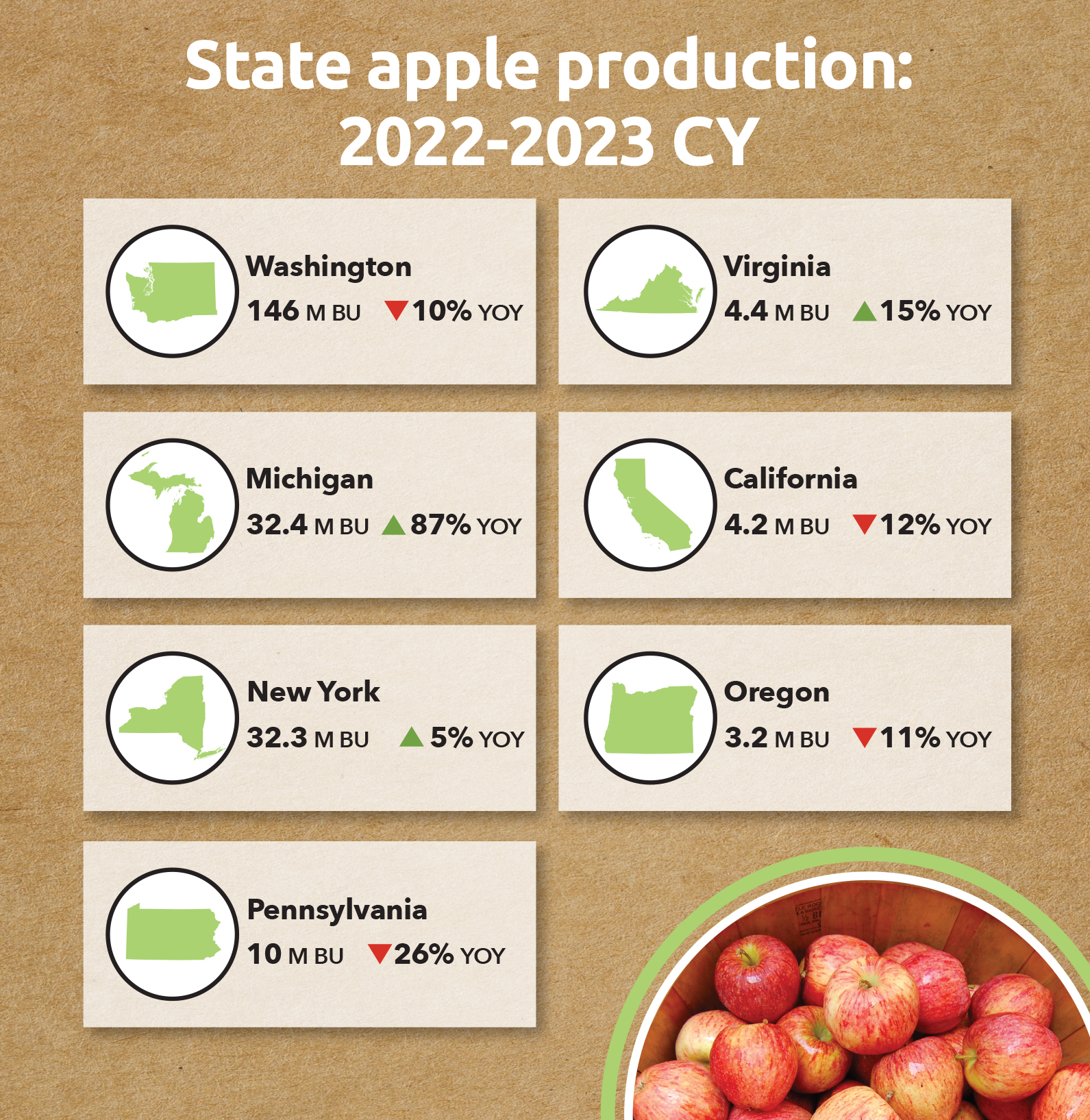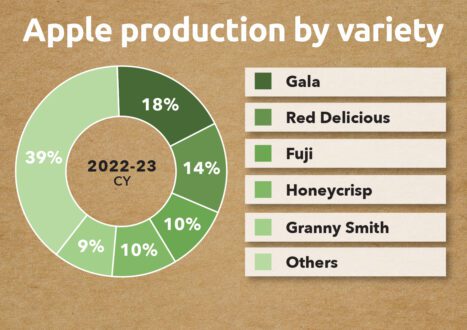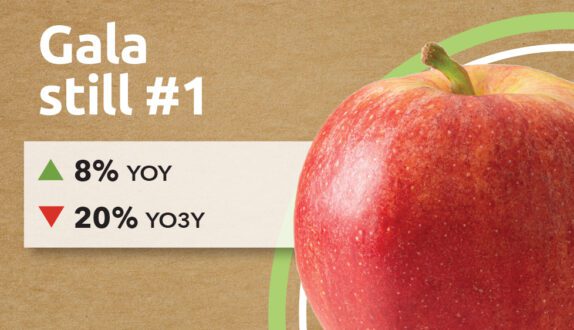

Jun 9, 2023Falling Apples: Growers challenged by costs, declining acreage
U.S. apple growers are producing more fruit — and additional club varieties — on fewer acres but are also challenged by a series of higher growing costs during inflationary times.
Chris Gerlach, director of industry analytics at U.S. Apple Association, discussed these findings and others involving production, utilization, trade, exports, economics and other trends facing U.S. apple growers during a May 11 webinar.


From March 2020 to April 2023, inflation for the fresh fruit category was 14%, with apples at 17%. From 2021-22, inflation for fresh fruits declined 2% while apple prices increased 6%.
“Since 2020, the cost to buy apples is up 22%, but the cost to grow apples is 73% up,” Gerlach said. “That gulf has been growing. The PPI (Producer Price Index) has been down a little since this data point, but it’s still a significant factor.”
With the minimum wages for the H-2A temporary visa program, known as the Adverse Effect Wage Rate (AEWR), going up an indeterminate amount every year, labor remains the chief concern for growers. With higher fertilizer and pesticide prices, plus rising fuel and machinery costs, it’s a highly challenging environment in orchards, he said.
Overall, apple production since 2013 is trending downward, declining from an average of 267 million 42-pound bushels in 2012-13 to an average of 258 million bushels in 2022-23. In the most recent year-over-three-year period, acreage declined 2% with yields down 10%.
In 2022-23, production in Washington, Pennsylvania, California and Oregon was lower while Michigan, New York and Virginia harvest volume increased compared to the previous year, according to the U.S. Department of Agriculture.
During the past decade, most of the leading apple states displayed acreage declines.


While Washington’s is up, Michigan, New York, Pennsylvania, Virginia and California saw lower plantings over 10 years.
In the most recent 3-year-over-year period, acreage was flat in Michigan, increased 1% in Washington but declined in New York (2%), Pennsylvania (10%), Virginia (14%) and California (23%).
Yields in the 3-year period declined 20% in Washington, 9% in Pennsylvania and Oregon, and 11% in California, but increased in Michigan (28%), New York (5%) and Virginia (13%).
In Washington, acres are expanding with new groves bringing higher capacities than what the state produced in 2019.
While Michigan acreage is flat, yield improvements allow growers to harvest 30% more apples on the same acreage. The 10-year trend shows losses.
The state’s 87% 2022-23 year-over-year production followed a low 2020-21 production and helped the Wolverine State squeak-out the No. 2 production spot, Gerlach said.
In New York, growers are witnessing higher production on fewer acres so that while acreage over the past decade is trending downward, it increased 3% in the most recent three years.
Pennsylvania’s declining 10-year acreage (down 10%) matches its 3-year declining yield trend.
“That is starting to be a significant number in Pennsylvania with yield following,” Gerlach said.
Virginia’s acreage dropped more than the decade production decreases but were accompanied by higher yields.
“They are shedding some unproductive land and getting more out of what they have,” Gerlach said. “It’s good news-bad news in Virginia.”
California’s 10- and 3-year declines could be systemic following a loss of 23% of the state’s orchards to late frost and other factors.
“Yield is falling,” he said. “California’s acreage and production figures show some really interesting things to watch.”


In Oregon, the decade trend is even with some weather-related down years in the last three years, mirroring Washington production.
The leading varieties, in order of production, are Galas, Red Delicious, Fujis, Honeycrisps and Granny Smiths. Red Delicious has experienced a large downward trend, falling 41% during the last five years with production beginning to taper, Gerlach said.
Honeycrisps are tied with Fujis for 10% of production, and are poised to overtake Fujis, he said. Honeycrisp and Cosmic Crisp production is up 48% and 40%, respectively. Noting the smaller production base, Gerlach said Cosmic Crisps keep exponentially growing year-over-year. From 2018- 22, club varieties expanded 77% and displayed a 5% increase in market share, according to the most recent USApple monthly storage report, released May 10.
In terms of utilization for 2022, no changes were noted in the percentages of fresh and processing usage. Fresh constitutes 66% of overall production, with processing at 31%.
— Doug Ohlemeier, assistant editor














